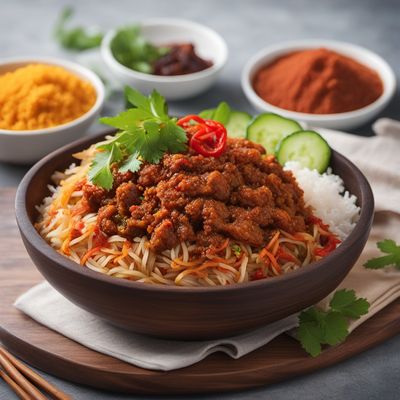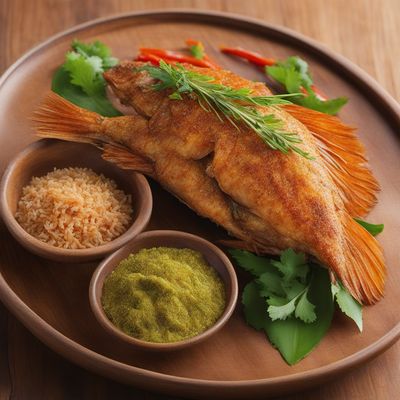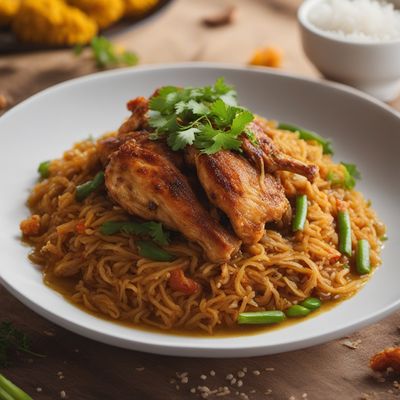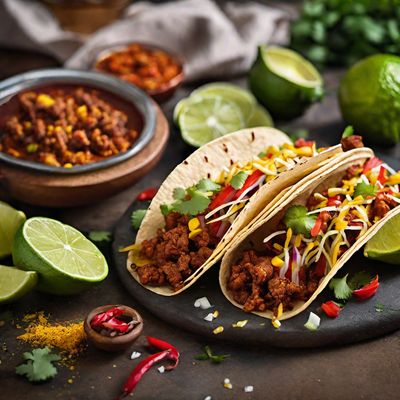
Ingredient
Marmalade, mandarins
Tangy Citrus Delight: Exploring the World of Mandarin Marmalade
Mandarin marmalade is a thick, spreadable preserve made from mandarin oranges. It has a vibrant orange color and a slightly chunky texture due to the presence of small pieces of fruit peel. The marmalade has a tangy and sweet taste, with a pleasant bitterness from the peel. Its consistency is sticky and gel-like, making it perfect for spreading on toast or using as a glaze for meats and desserts.
Origins and history
The origins of marmalade can be traced back to ancient Greece, where it was made from quince fruit. However, the use of mandarins in marmalade gained popularity in the 18th century in Britain. The sweet and aromatic flavor of mandarins made them an ideal choice for creating a delicious preserve. Today, mandarin marmalade is enjoyed worldwide and is particularly popular in British and Mediterranean cuisines.
Nutritional information
Mandarin marmalade is a good source of vitamin C and dietary fiber. It contains approximately 50 calories per tablespoon.
Allergens
Mandarin marmalade may contain traces of citrus allergens and should be avoided by individuals with citrus allergies.
How to select
When selecting mandarin marmalade, look for a brand that uses high-quality mandarin oranges and minimal additives. Check the ingredient list to ensure it does not contain excessive amounts of sugar or artificial preservatives. Opt for marmalade that has a vibrant orange color and visible pieces of fruit peel for added texture.
Storage recommendations
Store mandarin marmalade in a cool, dry place away from direct sunlight. Once opened, refrigerate the marmalade to maintain its freshness and quality. It can typically be stored for several months if properly sealed and refrigerated.
How to produce
Mandarin marmalade can be produced at home by simmering mandarin oranges, sugar, and water until the mixture thickens. The oranges are typically peeled, and the peel is finely chopped or sliced before being added to the mixture. The marmalade is then cooked until it reaches the desired consistency.
Preparation tips
Mandarin marmalade can be used as a spread on toast, scones, or muffins. It can also be used as a glaze for roasted meats or as an ingredient in sauces and dressings. For a twist, try adding a spoonful of mandarin marmalade to yogurt or ice cream for a burst of citrus flavor. To enhance the texture, strain the marmalade before using it in recipes that require a smoother consistency.
Substitutions
Orange marmalade can be used as a substitute for mandarin marmalade, although the flavor profile will be slightly different.
Culinary uses
Mandarin marmalade is commonly used as a spread on toast or as an ingredient in baked goods such as cakes and tarts. It can also be used as a glaze for roasted meats or as a topping for desserts like cheesecakes and pancakes.
Availability
Mandarin marmalade is commonly available in supermarkets and specialty food stores worldwide.
More ingredients from this category
Recipes using Marmalade, mandarins

Chinese Indonesian Mchadi
Savory Rice Pancakes with Chinese Indonesian Flair

Crispy Fried Fish with Madurese Flavors
Madurese Crispy Fish Delight

Madurese-style Fattah Djaj
Savory Chicken and Rice Delight: Madurese Fattah Djaj

Soto Padang
Indonesian Delight: Fragrant Soto Padang

Tacos al Pastor
Indo-Inspired Tacos al Pastor: A Fusion of Flavors

Singaporean Chinese-style Panettone
Lucky Mandarin Panettone: A Fusion of Italian and Singaporean Chinese Flavors